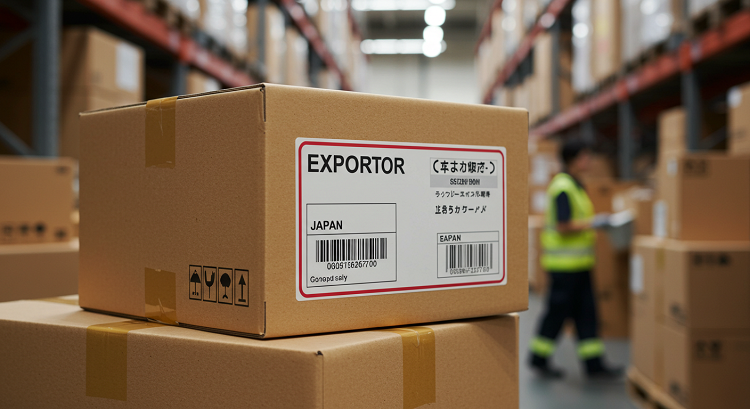How to Export to Japan? E-commerce & Delivery Tips
Do you want to win over Japanese customers?
Then ask yourself – is your delivery service ready for Japan’s booming e-commerce market?
If not, you could be missing out on one of the world’s most valuable opportunities. Japan is the fourth-largest e-commerce market globally, and it’s evolving fast. But entering this market comes with unique challenges: from delivery expectations to payment preferences.
Let us outline the key success factors for exporting to Japan. Learn practical delivery tips, understand consumer insights, and discover how Landmark Global’s parcel delivery solutions to Japan can help you scale. Responsibly and systematically.
The Japanese e-commerce market. Why should you care?
Japan’s e-commerce user population is projected to reach 92.8% by 2027, up from 78.5% in 2023. Despite a historically slower shift to online shopping, digital buying in Japan is currently accelerating. Daily deliveries became the new norm in major cities like Tokyo and Osaka.
What does the growth mean for business owners? If you want to export your goods to Japan, remember that e-commerce development equals:
- Rising demand for fast, reliable deliveries.
- Growing popularity of subscriptions and convenience-based services.
- A strategic opportunity for international sellers who can deliver fast, transparent, and culturally adapted experiences, tailored perfectly for the Japanese market.
Parcel Delivery Solutions to Japan and more. Understand the upcoming challenges
Export Challenge #1: New logistics expectations
Japanese consumers expect fast and precise delivery. What might be surprising for west-located businesses is that many customers still value in-person cash or convenience store payments (Konbini). Delivery timing is a trust signal – you can’t overlook it.
How to meet these expectations? Use reliable Parcel Delivery Solutions to Japan that offer:
- Courier DDP (Delivered Duty Paid) and Postal DAP (Delivered At Place) options;
- 3 to 7-day end-to-end transit with 2-day final delivery;
- Daily flights to Tokyo;
- Seamless customs clearance by local brokers;
- Last-mile handled by Japan’s #1 commercial delivery partner.
Our tip: Label your products clearly and correctly, especially for food, electronics, or personal care items. Missing certifications can cause unwanted border delays.
Export Challenge #2: Customs, regulations & returns
Doing business in Japan means complying with national standards, from labeling food in Japanese to recycling packaging. For example, food and kitchen items must follow the Food Sanitation Law, and electronic devices must meet Japan’s technical standards.
Our tip: Returns? Keep it simple. Japanese consumers value discretion and speed. Additionally, Japanese shoppers take time to assess products carefully, especially high-value items.
Export Challenge #3: Cultural nuances in buying behavior
What do Japanese shoppers buy online? It’s not just fashion anymore. Food, electronics, and interior appliances/decor lead B2C categories. Subscription services, from beauty boxes to cars, are also booming.
And where do they shop? Local marketplaces like Rakuten, Yahoo! Japan Shopping, and Amazon Japan dominate the space. Selling through these platforms increases visibility and trust, but it’s not required to succeed.
Don’t let customs, delivery confusion, or payment friction stall your growth. With Landmark Global, your business benefits from fast, predictable parcel delivery solutions to Japan, trusted customs handling, scalable logistics, and local expertise.

